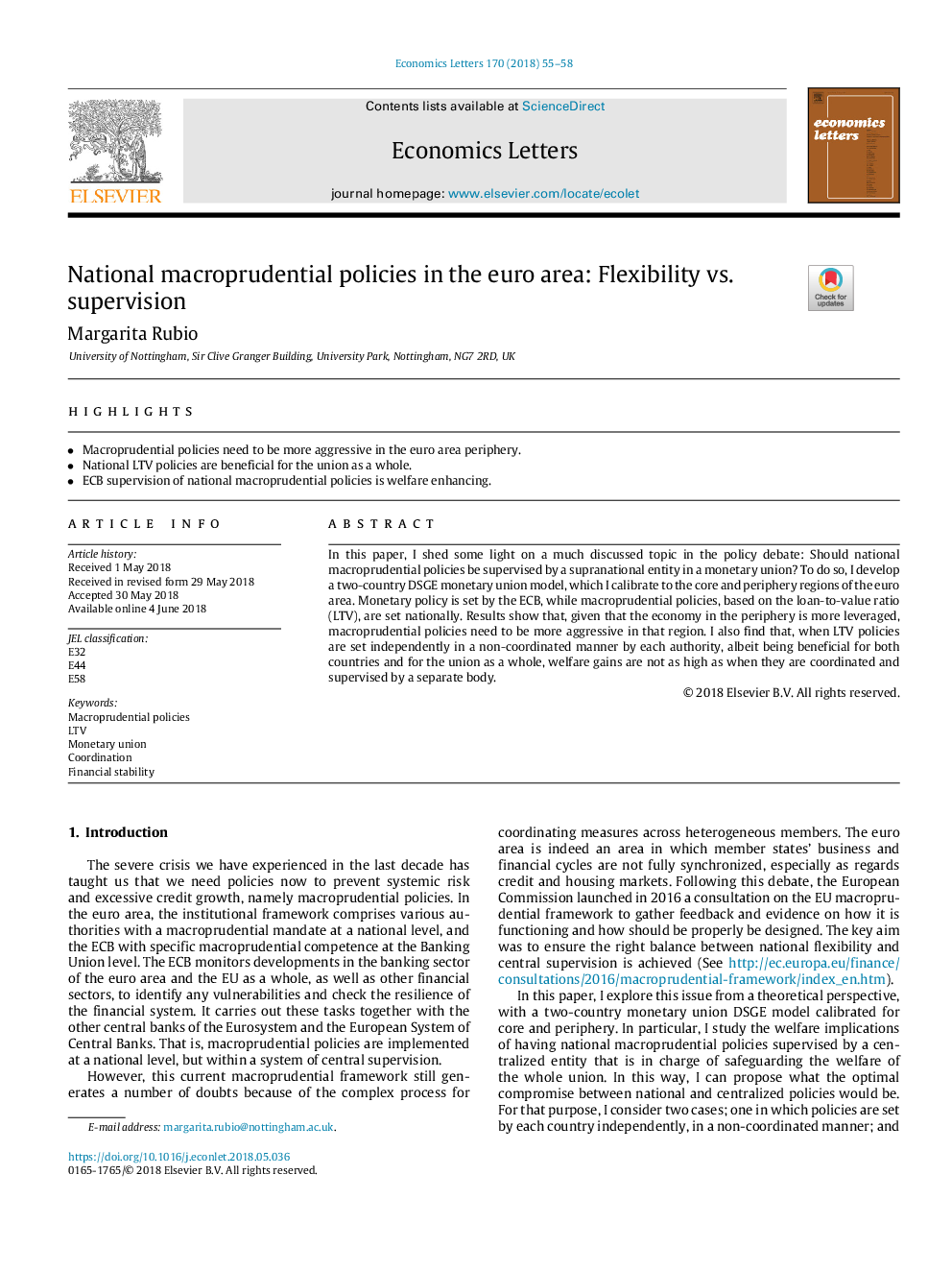| Article ID | Journal | Published Year | Pages | File Type |
|---|---|---|---|---|
| 7348647 | Economics Letters | 2018 | 4 Pages |
Abstract
In this paper, I shed some light on a much discussed topic in the policy debate: Should national macroprudential policies be supervised by a supranational entity in a monetary union? To do so, I develop a two-country DSGE monetary union model, which I calibrate to the core and periphery regions of the euro area. Monetary policy is set by the ECB, while macroprudential policies, based on the loan-to-value ratio (LTV), are set nationally. Results show that, given that the economy in the periphery is more leveraged, macroprudential policies need to be more aggressive in that region. I also find that, when LTV policies are set independently in a non-coordinated manner by each authority, albeit being beneficial for both countries and for the union as a whole, welfare gains are not as high as when they are coordinated and supervised by a separate body.
Related Topics
Social Sciences and Humanities
Economics, Econometrics and Finance
Economics and Econometrics
Authors
Margarita Rubio,
